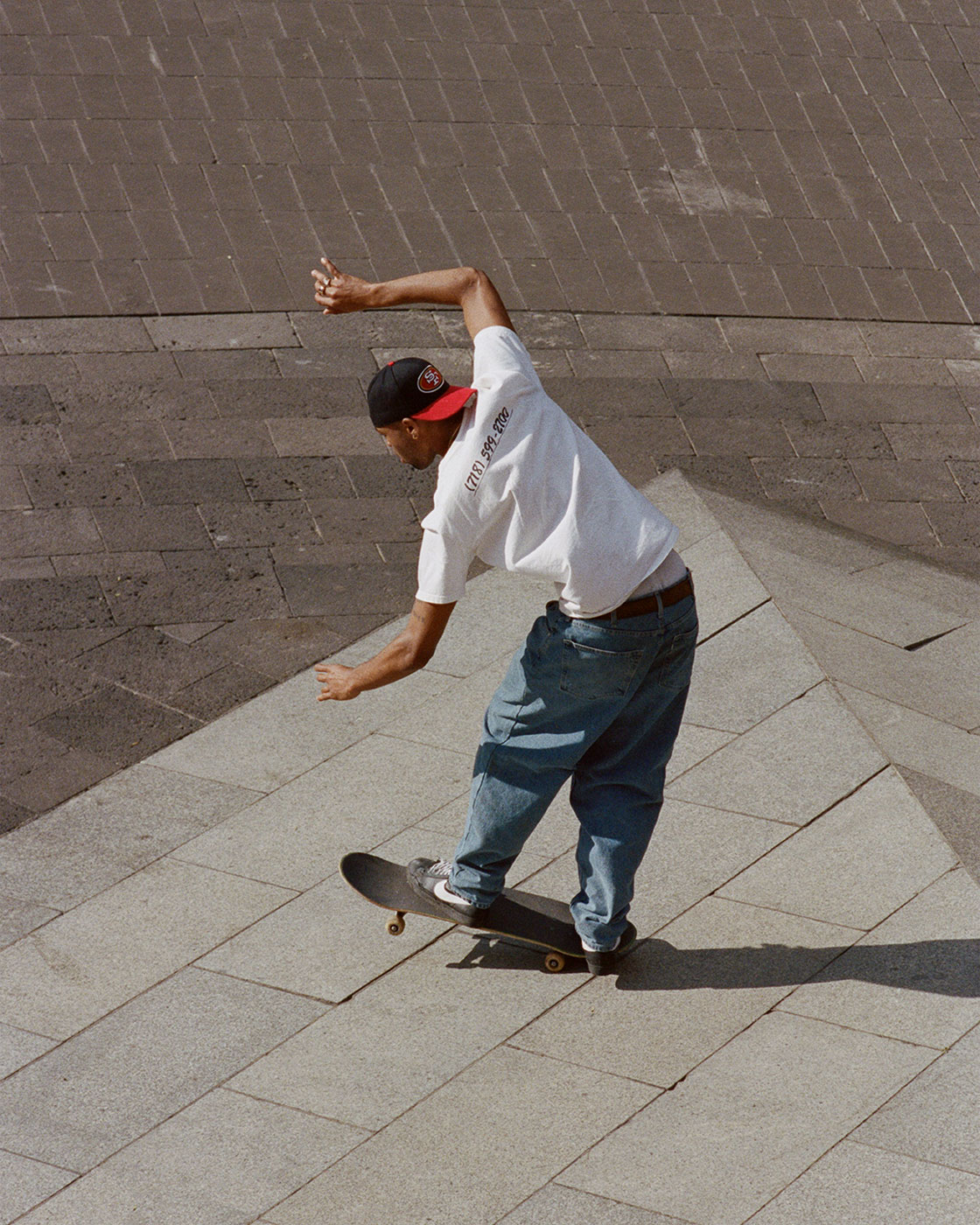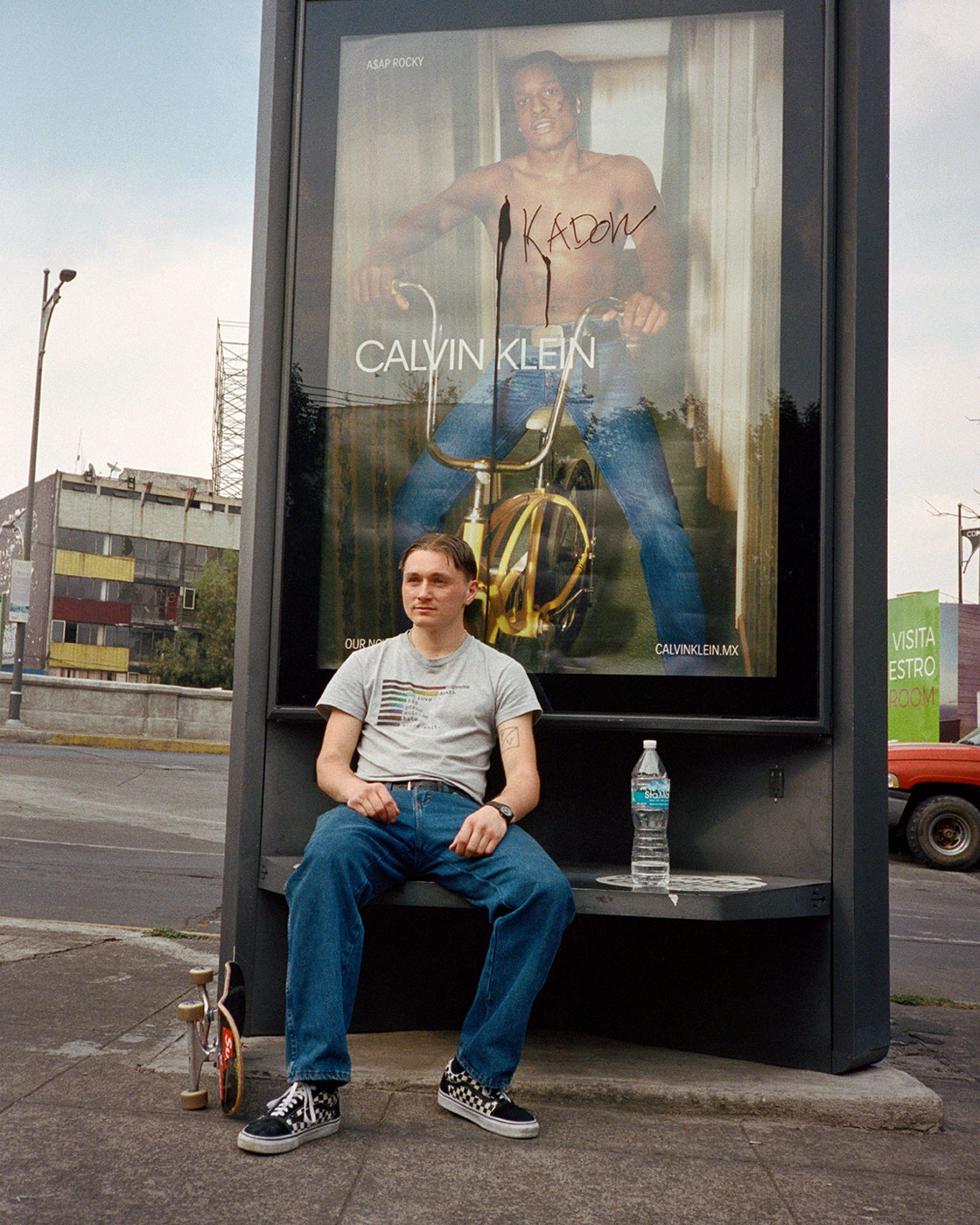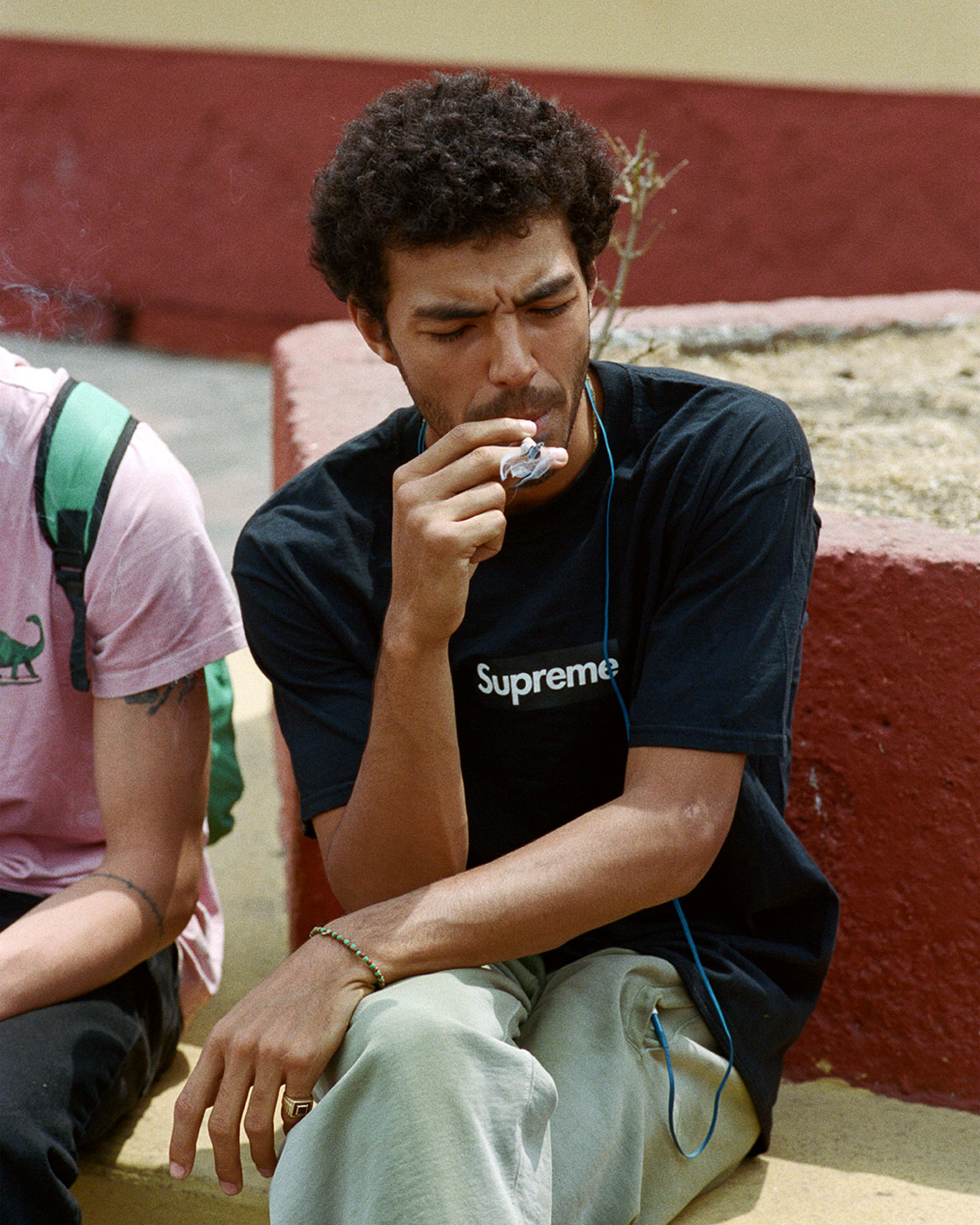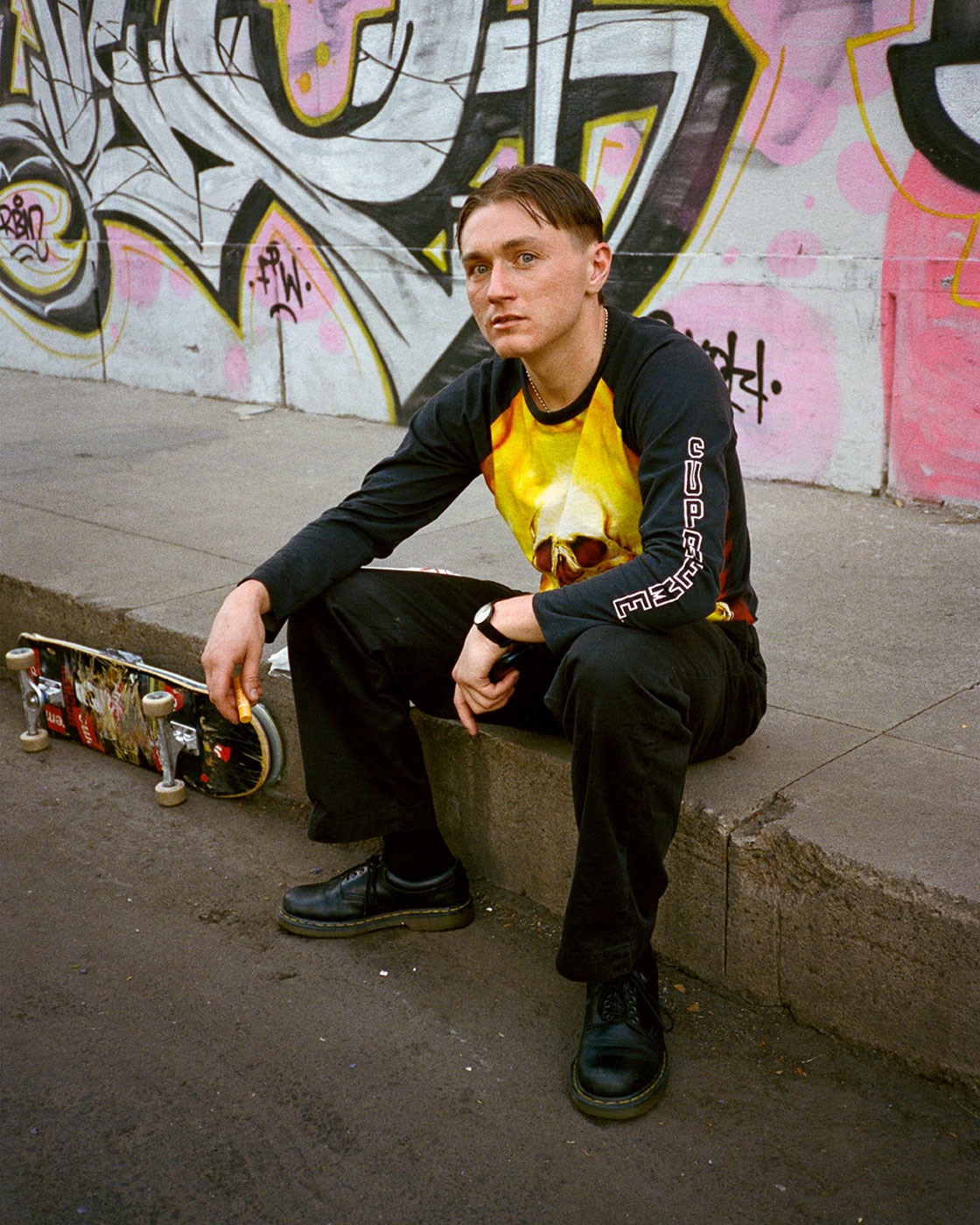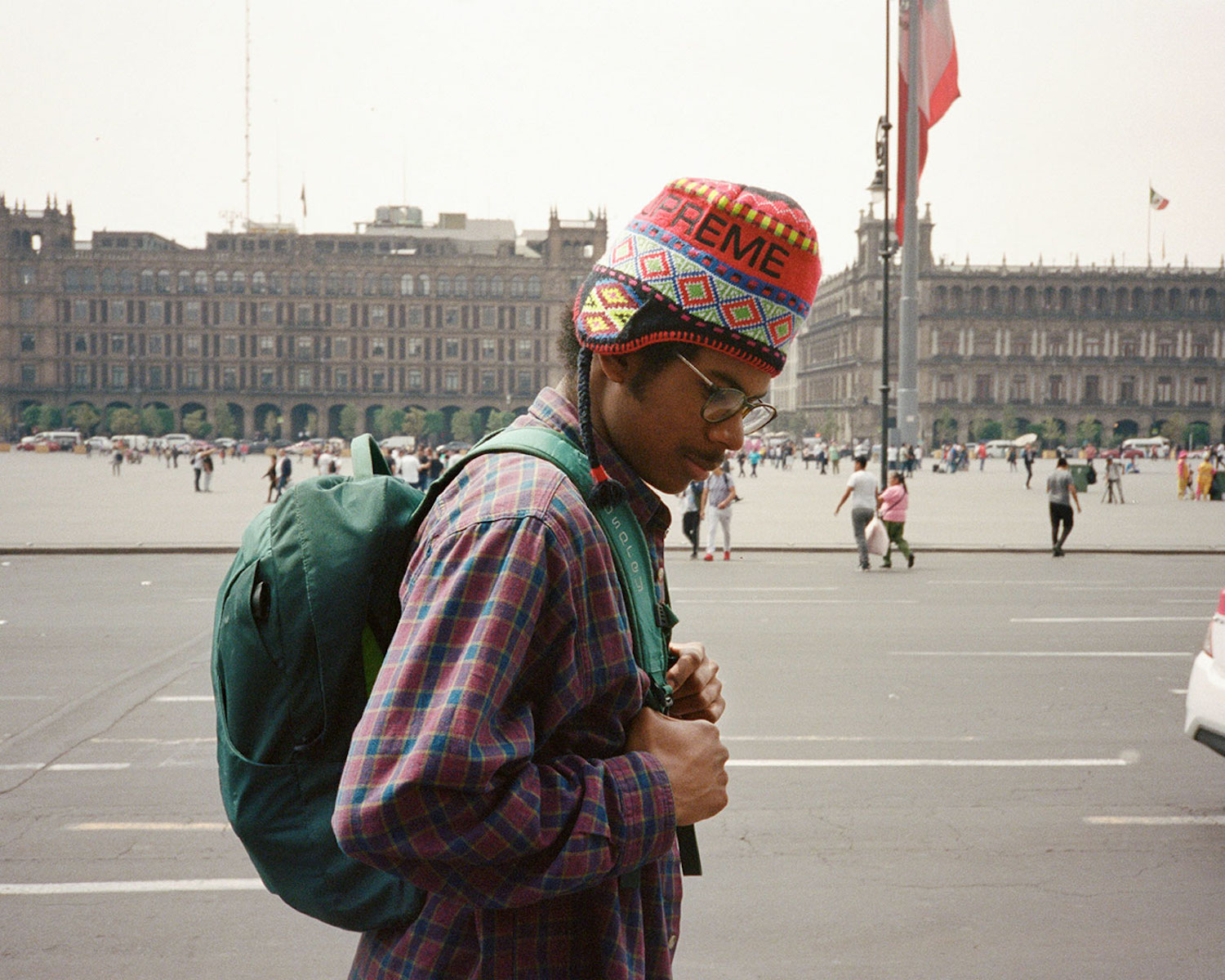Grace Ahlbom’s lens captures skateboarding boys in states of mundanity, but her inquisitive framing brings us closer to them. The artist and photographer — whose work in the field has rightfully earned her the username @sk8rmom420 on Instagram — has long chosen them as her subjects, teenage boys predominantly. And as skateboarding as a sport went from underground into the upper echelons of fashion, her work has ascended with it. Grace’s work with Helmut Lang and various style titles is as piercing and expressive as the motiveless pictures she takes of young skaters in the streets of cities around the world.
Her latest project, a zine titled CDMX, was shot in Mexico City with a group of skaters who were visiting for a Supreme project. But instead of capturing them in a state of performance, Grace’s lens slips beyond that. This is a series of pictures of skaters as friends, as young men, exploring the city and spending time with each other. They mope about, smoke cigarettes and eat tacos off the floor. But what could be banausic feels poetic in her hands. Like the great American documentary photographers that came before her — be it Nan Goldin, Larry Clark or her old mentor Ryan McGinley — Grace sees past what’s in front of her, and finds beauty in what most shy away from.
Here, she unpacks the making (or rediscovery) of this series, the throughline of skaters and architects and how the world is changing for her and those she photographs.

These photos were taken in Mexico City last spring while on a skate trip. Before you rediscovered these photos, what were the lingering memories of it in your head?
Being a photographer, I feel like I actually have a pretty bad memory, because I’m constantly documenting things. Especially shooting on film, in that instant I’m purely just trying to capture a moment knowing I won’t be able to revisit it until much later. I start to rely on my photographs as a way to remember and my archive becomes a preservation of my memories. When I came across these images while going through my archive, I was struck by how different the trip resonated to me. At the time the pictures were taken, I always just looked back at it as a fun skate trip. I especially never thought something like traveling, being with friends and outdoor spaces could soon be taken away. While rediscovering them, only a year later, it felt right to publish a zine of work from a nearly forgotten folder tucked away in my archive.
What’s your relationship like with your subjects? Do you prefer to live within their world or shoot from a slightly more detached space?
The relationship with my subject changes depending on the context of the situation. Photography forces me out of my routine and bubble, and puts me in situations I normally wouldn’t find myself in. Utilising my camera as a key that gets me through the door, giving me purpose to be somewhere. Being a photographer means you’re dabbling with all of these different worlds. One shoot could be with your hero, and the next with your best friend. Although, I typically approach every subject as a friend — I try to make them feel comfortable and casual.
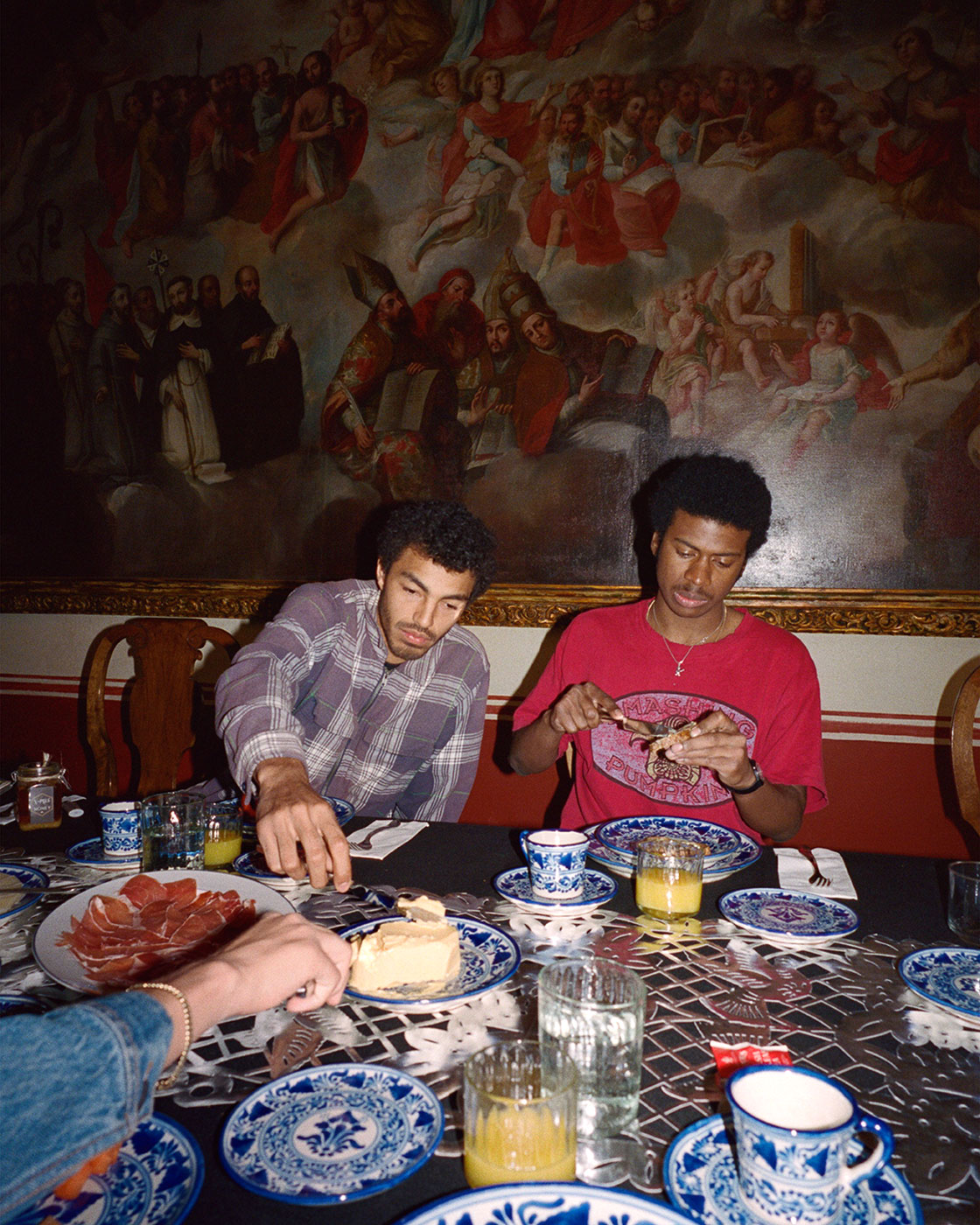
Do you have a favourite shot within the zine?
My favourite shot might be of Sage and Genny eating one morning in front of this baroque painting. I would always bring my camera to breakfast because it was quite the scene, everyone was seated at this twelve-person table that looked straight out of The Last Supper. We were staying in the historic center [of Mexico City], in this 17th-century building with a grand piano and original artwork on the walls. The contrast of the skaters casually hanging out and playing video games in this lavish setting made for a lot of great moments to capture.
Skateboarders have a habit of utilising basic elements of modern architecture over the grandiose structures most photograph. How does that angling, using mundane objects as backdrops to dynamic characters, affect your practice?
Skateboarding is similar to photography in that it requires looking carefully. Skaters depend on the skill to see and find opportunities in everyday architecture. It’s something I’ve picked up overtime, noticing the ways they interpret space, how something like a set of stairs instantly becomes a place of self-expression. Every skater has their own style and way of interacting with the physical world, which I think is the most fascinating part of watching. It’s laughable that the only two people who would freak out over a railing are a skateboarder and an architect.
A lot of these images document the anticipation of skateboarding instead of the action shots themselves. It’s showing the lifestyle of the skaters instead of the actual skateboarding. I’m more interested in the moments of boredom that comes with being on a skate trip. What’s interesting to me is when someone’s bored it can be easier to see who they are by what they choose to do. It’s a more organic expression of who they are, because they’re left to create something with what they have, or don’t have, around them.

Do you think the outside world will look, or feel, different for a long time?
The new normal has already started being ingrained into my head. Lately, I have been having a hard time watching films, because the entire time I’m so caught up with these actors in environments and situations I couldn’t fathom being in right now. Kind of like when I re-discovered these Mexico City images in quarantine. I was like “we were eating tacos off the floor?” I try not to relish in “the good old days,” because realistically this could be a turn for the better. We’re in it for the long haul. Moving forward, as a photographer, I want to put all of my creative energy towards efforts that will have a positive impact on communities that are hurting. Right now, it’s important to support small businesses that have been resources for New York’s creative community. My share of the proceeds from the zine will also go to the LGBT Books to Prisoners.

